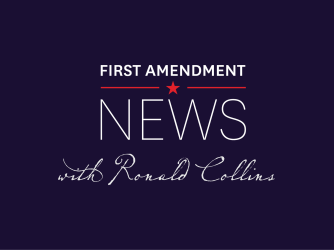Table of Contents
Syracuse enlisted state, local police to hunt down whoever wrote the letter Z on a campus bulletin board

Wikipedia.org
Hendricks Chapel at Syracuse University. Earlier this year, the university opened an investigation into pro-Russian writing and the letter "Z" on a board in the art department designated for students to express themselves.
After receiving a bias complaint about pro-Russian “graffiti” on campus in March, Syracuse University launched a resource-intensive investigation involving local and state police departments.
The result?
The police closed the case with no outcome, since the so-called graffiti was protected expression on a board in the art department designated for students to express themselves.
Syracuse issued a public statement explaining its receipt of a bias incident report on March 13 concerning pro-Russian writing on a campus bulletin board. According to the incident description, the writing “contained language, written in Russian, glorifying the invasion of Ukraine, along with a symbol reportedly displayed on some Russian military vehicles taking part in that invasion.” The offending symbol was the letter “Z,” a symbol of support for Russia’s invasion of Ukraine, which, at the time, had been going on only a few weeks.
The university’s Department of Public Safety said it contacted state and local law enforcement in response to the bias complaint “to identify those responsible for [the] graffiti.” The university also said the message was removed from the board.
That’s when FIRE’s ears perked up. We filed New York Freedom of Information Law requests with local and state police departments. We finally heard back from the New York State Police, which shared its incident report with FIRE late last month. The report confirms our suspicions: The investigation was a waste of time and resources, and Syracuse blatantly disregarded its own policies protecting free expression. (Although that’s nothing new for the 2021 recipient of our Lifetime Censorship Award.)
The state police and Syracuse Department of Public Safety investigations, which were closed in late March, identified no suspects and resulted in no disciplinary action or arrests. The report also added that the incident would be discussed with the district attorney’s office, although it is unclear if these discussions ever happened.
Syracuse should never have undertaken this investigation in the first place, let alone escalated it to law enforcement.
But given that there was never anything more to this story than some free speech on a free speech board, Syracuse should never have undertaken this investigation in the first place, let alone escalated it to law enforcement. School officials should have simply recognized that the expression was protected (particularly as it conveyed a political message, albeit one others disagreed with). Whether anyone found that political message offensive is beside the point.
A true commitment to free expression means protecting, and even anticipating, viewpoints that diverge from campus orthodoxies or from what administrators deem acceptable. Indeed, dissent during wartime has a rich history. Further, even if the “Z” marking and Russian writing were done in a trolling manner, they still constitute protected speech under university policy.
This may be the clearest example yet of how bias reporting systems invite abuse.
University officials must look to their own policies on free expression before deciding to launch time- and resource-intensive investigations that inevitably chill students’ speech. Instead, this spring, Syracuse took a page from Russian president Vladimir Putin’s playbook by investigating and punishing speech it dislikes.
Recent Articles
FIRE’s award-winning Newsdesk covers the free speech news you need to stay informed.

How court rulings in Hong Kong and Australia threaten the global internet

Another Connecticut town tramples Constitution with onerous town green rules

Majority of college students support Israel/Gaza campus protests, 1 in 10 actually participate in them



